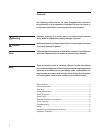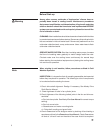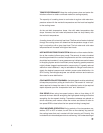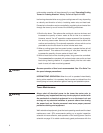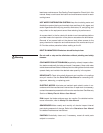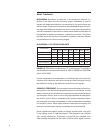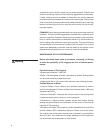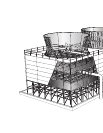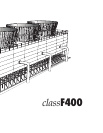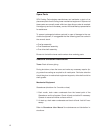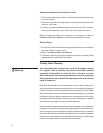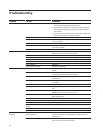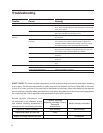
9
compounds which contain copper are not recommended. Chlorine and
chlorine containing compounds are effective algaecides and slimicides.
If used, chlorine should be added as intermittent (or shock) treatment
only as frequently as needed to control the slime and algae. Chlorine and
chlorine containing compounds should be added carefully since very high
levels of chlorine may occur at or near the point of entry into the circulat-
ing water system.
FOAMING–Heavy foaming sometimes occurs when a new tower is put into
operation. This type of foaming generally subsides after a relatively short
period of operation. Persistent foaming can be caused by the concentra-
tions of certain combinations of dissolved solids or by contamination of
the circulating water with foam-causing compounds. This type of foaming
can sometimes be minimized by increasing the blowdown, but in some
cases foam depressant chemicals must be added to the system. Foam
depressants are available from a number of chemical companies.
MAINTENANCE OF FILL PERFORMANCE
Owner must keep water clean by treatment, screening, or filtering
to avoid the possibility of fill clogging and loss of thermal perfor-
mance.
Potential Causes of Fill Clogging:
• Suspended materials—Trash, etc.
• Scale—Can be sulfates, silicates, carbonates, or oxides. Scaling effects
can be accentuated by suspended muds.
• Algae and/or Slime—Can control with chlorine or non-oxidizing biocides.
Possible Sources of Scale:
• Calcium Sulfate—From make-up and sulfates produced by sulfuric
acid for pH adjustment. Calcium sulfate should be kept below 1000 ppm
expressed as CaCO
3
.
• Calcium Carbonate—Generally will not form scale in the cooling tower
if carbonate scaling does not occur in the condenser.
• Exceptions: If make-up water contains surplus free carbon dioxide,
scaling may be inhibited in the condenser, but may occur in the tower fill
because of CO
2
stripping.
• Silicates and Oxides—Silica scale is virtually impossible to remove. Silica
scale is unlikely if SiO
2
is held below 150 ppm. Oxides, such as iron oxide,
can coat all parts of the system if soluble iron is present in concentrations
above 0.5 ppm. Iron oxides do not usually develop into thick scales but
can accentuate the development of other scales.
Warning




